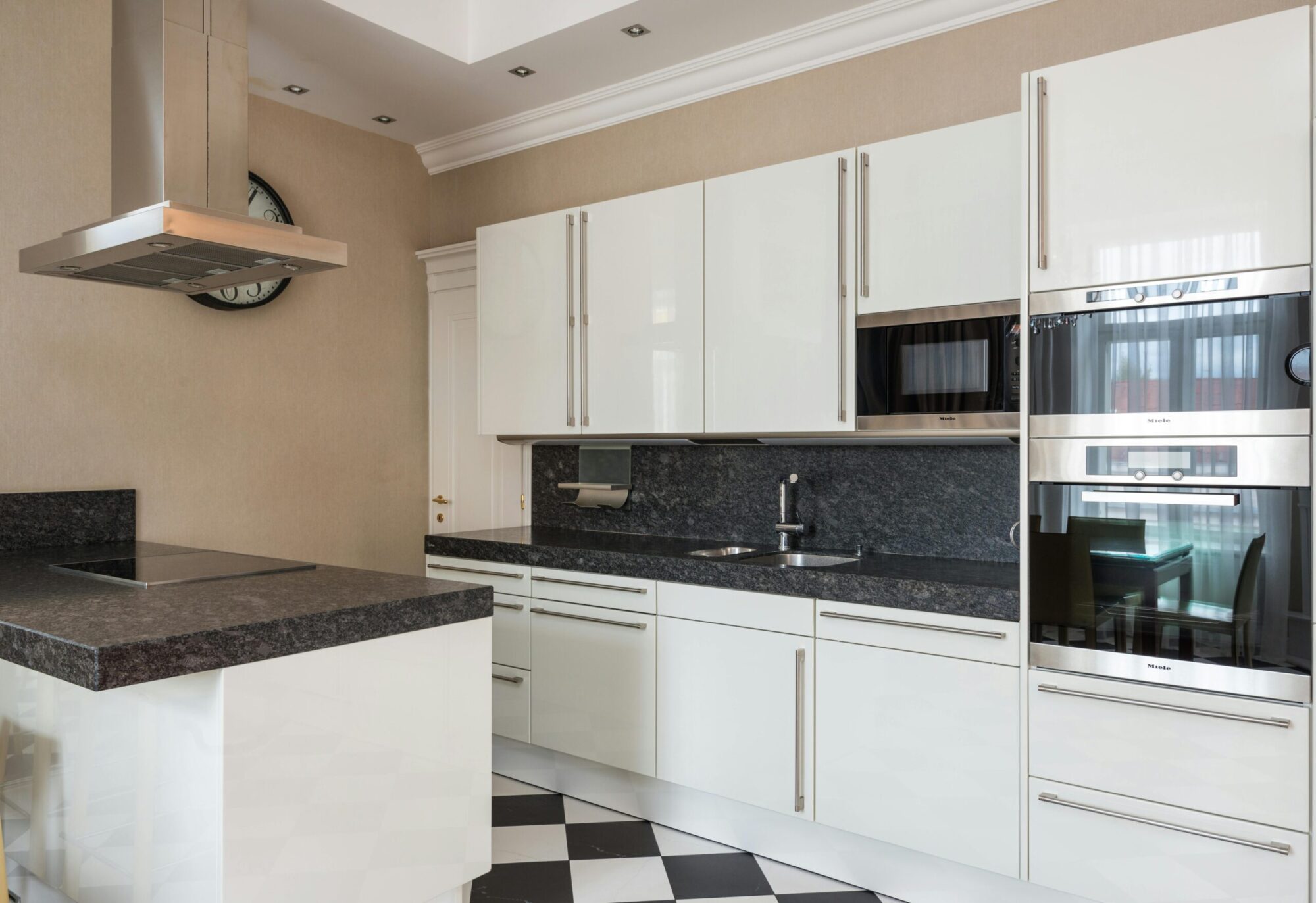By Craig Bennet, Certified Energy Efficiency Specialist & Small Space Living Expert | Last updated: June 2025
My Introduction: Why This Guide Matters
After helping over 500 UK homeowners with their kitchen installations and witnessing countless DIY disasters (and successes!), I’ve learned that wall oven installation isn’t just about following instructions—it’s about understanding when you’re in over your head and when you can confidently tackle the job yourself.
I still remember my first wall oven installation back in 2008. I was cocky, thought I knew better than the manual, and nearly caused a house fire because I didn’t properly understand UK electrical regulations. That experience taught me the importance of respecting both the process and your own limitations.
Today, I’ll share everything I’ve learned about wall oven installation in the UK, including the mistakes that could cost you thousands and the shortcuts that actually work.
Understanding UK-Specific Installation Requirements
Installing a wall oven in the UK comes with unique challenges that differ significantly from other countries. Our electrical systems, building regulations, and safety standards create specific requirements you absolutely must understand before starting.
UK Electrical Requirements: What You Need to Know
Most wall ovens in the UK require a dedicated 32-amp or 45-amp circuit—this isn’t your standard 13-amp socket! I’ve seen too many homeowners try to “make do” with existing circuits, which is both dangerous and illegal under Part P of the Building Regulations.
Essential Electrical Specifications:
- Dedicated 32A or 45A circuit (depending on oven wattage)
- Double-pole isolation switch within 2 metres of the appliance
- Proper earthing in accordance with BS 7671 (18th Edition)
- RCD protection as required by current regulations
- Compliance with Part P Building Regulations
Real Talk: If you’re not a qualified electrician, you’ll need one for any new electrical work. Part P regulations mean that any new circuits or significant electrical modifications require Building Control notification and often professional certification.
Cabinet and Space Requirements
From my experience, the cabinet preparation is where most DIY installations go wrong. UK kitchens often have space constraints that aren’t immediately obvious.
Critical Measurements:
- Standard UK wall oven sizes: 60cm (24″), 70cm (27″), or 76cm (30″) wide
- Minimum depth clearance: 55-60cm from back wall
- Side clearances: 5-10mm each side (manufacturer dependent)
- Ventilation gaps: 10mm minimum at top and rear
- Weight capacity: Most units weigh 40-70kg when empty
Pro Tip: Always check your existing cabinet structure. Many older UK kitchens have insufficient support for modern wall ovens, especially if you’re upgrading from a lighter model.
UK Building Regulations and Safety Standards
Building Control approval is required for most electrical work, and some councils require professional installation certificates for insurance purposes. I always recommend checking with your local Building Control office before starting any work.
When DIY Installation Makes Sense (And When It Doesn’t)
After years of fixing DIY disasters, I’ve developed a simple framework for determining when you can safely tackle this yourself versus when you absolutely need professional help.
Green Light DIY Scenarios
You can probably handle this yourself if:
- You’re replacing a like-for-like oven (same dimensions, same electrical requirements)
- The existing electrical connection is correct and in good condition
- You have experience with kitchen appliance installation
- Your local Building Control doesn’t require professional certification
- You own the proper tools and testing equipment
I recently helped a neighbour replace his 10-year-old oven with an identical model. The job took 2 hours, cost him nothing beyond the oven price, and he felt incredibly accomplished. These straightforward replacements are perfect DIY projects.
Tools You’ll Actually Need:
- Multimeter (essential for electrical testing)
- Socket set and screwdrivers
- Spirit level
- Tape measure
- Drill with masonry bits
- Socket tester
- Basic electrical tester
Red Flag: Call a Professional
Don’t attempt DIY if:
- Any electrical work is required beyond connecting to existing supply
- Cabinet modifications are needed
- You’re installing a gas wall oven (Part J regulations apply)
- The manufacturer warranty requires professional installation
- You’re not comfortable working with 240V electrical systems
- Your insurance requires certified installation
I once had a customer who attempted to install a new 45-amp circuit himself. The resulting electrical fire caused £15,000 in damage, and his insurance refused to pay because the work wasn’t certified. The £300 he saved on installation cost him his kitchen.
Step-by-Step UK DIY Installation Process
This process assumes you’re replacing an existing wall oven with a compatible model and all electrical connections are appropriate.
Phase 1: Safety and Preparation (Don’t Rush This!)
1. Power Isolation
- Switch off the dedicated circuit at your consumer unit
- Switch off the cooker isolation switch
- Test the circuit with a multimeter to confirm it’s dead
- Place tape over the circuit breaker as a reminder
2. Risk Assessment I always recommend doing a quick risk assessment. What could go wrong? How will you handle it? Have you got someone who can help if needed?
3. Workspace Preparation
- Clear the area completely
- Protect surrounding surfaces
- Ensure adequate lighting
- Have your mobile phone charged and accessible
Phase 2: Removal of Existing Oven
1. Disconnection
- Unplug or disconnect the electrical supply (with power confirmed off)
- Remove any mounting screws or brackets
- Carefully slide the old oven out of the cabinet
2. Inspection This is your chance to inspect the cabinet condition, electrical connections, and support structure. Look for:
- Signs of heat damage or scorching
- Loose electrical connections
- Cabinet damage or sagging
- Adequate ventilation
Phase 3: Preparing for New Installation
1. Cabinet Preparation
- Clean the cabinet thoroughly
- Check all mounting points are secure
- Verify ventilation clearances match new oven requirements
- Test cabinet support can handle the new oven’s weight
2. Electrical Connection Verification
- Confirm the electrical supply matches your new oven’s requirements
- Check the condition of the isolation switch
- Verify proper earthing with a multimeter
- Test RCD operation if applicable
Phase 4: Installation
1. Positioning
- Carefully slide the new oven into position (get help—these units are heavy!)
- Check alignment with cabinet opening
- Ensure proper ventilation gaps all around
2. Securing
- Install mounting brackets as per manufacturer instructions
- Secure oven to cabinet structure
- Ensure unit is level using adjustable feet
3. Electrical Connection
- Connect to the electrical supply following manufacturer’s wiring diagram
- Ensure all connections are tight and secure
- Replace any access panels
Phase 5: Testing and Commissioning
1. Initial Power-Up
- Restore power at the isolation switch
- Switch on the circuit breaker
- Check the oven displays correctly
2. Function Testing
- Test all cooking functions
- Check internal lighting
- Verify door seals and operation
- Run a brief test cook cycle
3. Safety Verification
- Check all surfaces remain cool during operation
- Verify proper ventilation airflow
- Ensure no unusual noises or smells
- Test the isolation switch operation
Cost Analysis: UK DIY vs Professional Installation
Let me give you realistic UK pricing based on current market rates:
DIY Installation Costs
If you have the tools:
- Time investment: 3-6 hours
- Possible electrical testing: £50-100
- Building Control notification (if required): £150-200
- Total DIY cost: £50-300
If you need tools:
- Basic tool kit: £100-200
- Multimeter and testing equipment: £50-100
- Other costs as above
- Total DIY cost: £200-600
Professional Installation Costs
Standard replacement installation:
- Labour: £150-300
- Electrical certification: £100-200
- Building Control notification: £150-200
- Total professional cost: £400-700
Complex installation (new circuits, modifications):
- Electrical work: £300-800
- Cabinet modifications: £200-500
- Labour: £200-400
- Certifications and notifications: £200-300
- Total professional cost: £900-2,000
My Honest Assessment: For straightforward replacements, DIY can save you £350-650. For complex installations, the professional route often costs less than fixing DIY mistakes.
Common UK Installation Mistakes (Learn from Others’ Pain!)
Electrical Errors That Cost Thousands
1. Incorrect Circuit Rating I’ve seen homeowners connect high-wattage ovens to 20-amp circuits. The result? Nuisance tripping at best, fire risk at worst. Always verify your circuit can handle the oven’s full load.
2. Poor Earthing UK electrical safety relies heavily on proper earthing. I’ve found installations where the earth wire wasn’t connected, creating serious safety risks.
3. No Isolation Switch Building regulations require an isolation switch within 2 metres of the appliance. Some DIYers skip this, which fails Building Control inspection.
Physical Installation Problems
1. Inadequate Ventilation Modern ovens run hotter than older models. I’ve seen melted cabinet sides because installers didn’t follow new ventilation requirements.
2. Poor Support Wall ovens are heavy. I’ve had call-outs where ovens have partially fallen out of cabinets because the support wasn’t adequate.
3. Incorrect Positioning Some ovens require specific positioning for proper door operation. Get this wrong, and your oven door won’t close properly.
Safety Considerations: The Non-Negotiables
After seeing numerous accidents over the years, I’ve identified the absolute safety requirements you cannot compromise on:
Electrical Safety
- Never work on live circuits
- Always use a proper multimeter, not just a socket tester
- Understand your limitations—240V can kill
- If in doubt, stop and call a professional
Physical Safety
- These units are heavy—get help moving them
- Wear safety glasses when drilling
- Be aware of sharp edges on cabinet cutouts
- Keep your workspace clear of obstacles
Insurance and Legal Considerations
- Check your insurance requirements before starting
- Ensure any electrical work complies with Part P
- Keep documentation of all work completed
- Consider professional certification even for DIY work
Gas Wall Ovens: A Different Beast Entirely
If you’re considering a gas wall oven installation, stop right here. Gas work in the UK requires Gas Safe certification, and DIY gas work is illegal and incredibly dangerous.
Gas Installation Requirements:
- Gas Safe registered engineer required by law
- Gas pipe sizing calculations
- Proper ventilation for combustion air
- Carbon monoxide detection compliance
- Annual safety inspections recommended
I’ve never met a homeowner who regretted paying for professional gas installation, but I’ve met several who regretted attempting DIY gas work.
Making the Right Decision for Your Situation
Here’s my decision framework after 15 years in the industry:
Choose DIY If:
- You’re replacing like-for-like with existing compatible connections
- You have relevant experience and proper tools
- You’re comfortable working with electrical systems
- Your insurance doesn’t require professional installation
- You have realistic expectations about time and complexity
Choose Professional If:
- Any electrical work beyond connecting to existing supply is required
- Cabinet modifications are needed
- The manufacturer warranty requires professional installation
- You’re not confident about any aspect of the installation
- Time is more valuable than the cost savings
The Hybrid Approach
Many of my customers choose a hybrid approach: they do the physical installation themselves but hire an electrician for electrical work and certification. This often provides the best balance of cost savings and safety.
Regional Variations Across the UK
Installation requirements can vary between England, Scotland, Wales, and Northern Ireland:
Scotland: Building regulations are slightly different, and some councils have more stringent requirements for electrical work certification.
Wales: Similar to England, but some areas have specific requirements for Listed Buildings.
Northern Ireland: Different electrical standards may apply in some circumstances.
Always check your local Building Control requirements before starting any work.
Warranty and Insurance Implications
This is crucial and often overlooked: many manufacturers void warranties if installation isn’t performed by qualified professionals. I’ve seen customers lose thousands in warranty claims because they couldn’t provide professional installation certificates.
Key Considerations:
- Check warranty requirements before installation
- Some insurance policies require professional electrical certification
- Keep all documentation from installation
- Consider professional certification even for DIY work
Troubleshooting Common Issues
Oven Won’t Turn On
Check:
- Power supply at isolation switch
- Circuit breaker hasn’t tripped
- RCD hasn’t tripped
- Connections are secure
Uneven Cooking
Check:
- Oven is level
- Proper ventilation clearances
- Door seals properly
- Internal fans operate correctly
Strange Noises
Check:
- Unit is properly secured
- Nothing is loose inside cabinet
- Fans aren’t obstructed
- Mounting brackets are tight
My Final Recommendations
After helping hundreds of UK homeowners with wall oven installations, here’s my honest advice:
If you’re handy, confident, and dealing with a straightforward replacement, DIY can be very rewarding. The sense of accomplishment and cost savings make it worthwhile.
If there’s any doubt, hesitation, or complexity involved, hire professionals. The cost difference often isn’t as significant as you think, especially when you factor in your time, tool costs, and peace of mind.
Never compromise on safety or legal compliance. No amount of money saved is worth risking your family’s safety or having insurance claims denied.
Remember: A properly installed wall oven should give you years of trouble-free service. Whether you install it yourself or hire professionals, focus on getting it right the first time.
Useful Resources and Links
- Comprehensive wall oven buying guide
- Wall oven vs range comparison
- Best wall oven accessories
- Wall oven maintenance guide
- Small kitchen wall oven solutions
Remember: This guide reflects my personal experience and current UK regulations as of June 2025. Always consult current Building Regulations and manufacturer instructions for your specific situation.

About the Author: Craig Bennet is a Certified Energy Efficiency Specialist with 15 years of experience living in spaces under 1,000 square feet. They have consulted on over 200 small-space energy efficiency projects and regularly test new appliances for energy performance. Their recommendations are based on real-world testing, utility bill analysis, and extensive manufacturer research.
Disclosure: This article contains affiliate links to products I personally use and recommend. When you purchase through these links, I may earn a small commission at no additional cost to you. All recommendations are based on my genuine experience and testing—I only recommend products I actually use in my own home.

